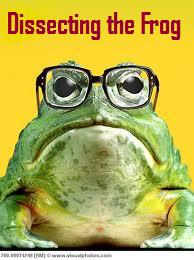Peep Thought
As
Peep Show concludes its final (and somewhat disappointing) season,[i] it
is worth reflecting on one of the many sources of its greatness. One of Peep Show’s
main weapons is the comedy of awkwardness, but the way its cringe-worthy
moments are achieved is different to some other noted examples of this art. The
most obvious contrast is with Curb Your
Enthusiasm. Simplifying a little, the plot of most Curb episodes involves constructing a climactic scene where Larry
David is placed in an embarrassing situation in part because of something he
did (or said, or didn’t do, or didn’t say) previously. Frequently this scene
will bring together two hitherto separate plot lines, the combining of which
generates the awkwardness. To take just one example, in the final episode in
Season 8 Larry accuses Michael J. Fox of harassing him and using his Parkinson’s
Disease as an excuse, while also trying to buy a suitable present for his
girlfriend’s son. Hence the climactic scene, where Larry’s demonstration
through mime of what present he bought is mis-interpreted by Fox and everyone
else:
In
Peep Show, this kind of plot is used, as when the untimely death of a family
pet is clearly a set-up for the following scene:
However,
awkwardness is frequently established in less circuitous ways, e.g., Jeremy’s
unprompted musical advice:
Or
Mark trying to guess the names of indie bands:
That
Peep Show can develop the comedy of
awkwardness with so little plot machinery is suggestive of how the show as a
whole works. These scenes rely on an unusual degree of realism, both with
regard to the central characters and to the reactions of the rest of the cast.
Mark and Jeremy are sufficiently well-developed characters that their
behaviour, though typical for each of them (one of the hallmarks of the classic
sitcom) is not entirely predictable. Add to that the tone of the show, where
characters rarely break into complete hysterics when something goes wrong, and the superb grasp of the details of everyday social
interactions, and you have a show sufficiently nuanced and rooted in reality to
be able to generate awkward moments in a single scene.
Larry
David is less of a dramatic character, more of a machine for creating awkward
situations. He is not stupid (Curb
wouldn’t be nearly as funny if he was), just bloody-minded, completely
unwilling to accept or even consider the possibility that he might be in the
wrong, and unlucky - the best Curb
episodes tend to be those where Larry is has done little wrong, but faces
calamity anyway.
That said, sometimes he just gets what he deserves:
There
is less detail or subtly to him than either Jeremy or Mark. It doesn’t follow that
Larry is less funny, but it indicates one of the ways in which Peep Show was such a successful and
unique creation.
[i] It had its moments – Super Hans’s wedding vows were a thing of
beauty – but overall it didn’t reach the admittedly stratospheric level of
previous years. Maybe it’s true what they say – you should never go back to
make a ninth season.

